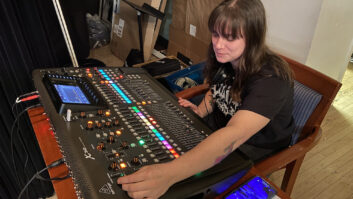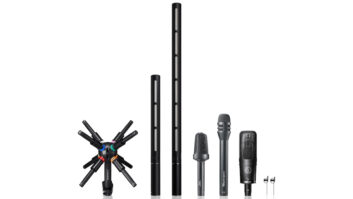Boston, MA––As described by Liz Teutsch, Director of Audio Production, Boston University’s Center For Digital Imaging Arts “is dedicated to new media in six different areas: 3-D Animation, Graphic and Web Design, Photography, Digital Filmmaking, Web Development and Audio Production.�
A totally separate school from the University, CDIA offers a two semester, eight month certificate program with rolling admissions throughout the year that offers a diversified program that appeals to “everyone from high school graduates, college students and career changes, to people nearing retirement age,� adds Teutsch. “Our program is very much job and career-oriented and although it’s still young, we have quite a few students who’ve achieved positive results.
Teutsch started as a musician, then studied music production, recording and engineering at Berklee, has done tech work in all areas of music production including post-production work, but music production remains her main discipline.
At CDIA, she oversees faculty members
and teaches recording and signal flow modules, music production modules, oversee students’ final projects and practicum projects.
Much of the recording curriculum at CDIA is computer-based, but the school teaches traditional recording in studio, along with live sound engineering and multi-tracking. As Liz explains, “we don’t require students to be musicians, but most of them are. We also teach most anything in terms of music, including film animation and game audio production. We teach these sequentially so that every student has a comprehensive overview.�
ADAM Audio S4VA (left, right and center) monitors are used in the main control room, along with a pair of S2.5A’s and two Sub12s. Asked about the monitors, Teutsch says, “They are uncompromising and very accurate. You don’t miss anything with ADAMs. If there’s a problem with the mix, you’ll hear it on these monitors. We find that it’s worthwhile mixing on a set of monitors where nothing’s hidden.
“There are two different scenarios we deal with, the recording and mixing environment where students are actually doing work, and critical listening situations. In the critical listening situation you want a flat response across the majority of frequencies. And the fact that ADAMs don’t lie is important so the students can understand how vastly different monitors and rooms can sound, which helps get their ears working so they can function effectively in all kinds of recording situations outside of the school.
“Sometimes students just throw up a microphone or an effect and call it done,� Teutsch continues, �so one of our main goals is to get students to appreciate quality so that they get the jobs instead of people working in their basements or bedrooms. We want them to understand why this kind of equipment exists, like a $5,000 stereo EQ, when you can a plug-in free with ProTools.�
For more information about ADAM Audio USA, please call 516.681.0690, or click to www.adam-audio.com







